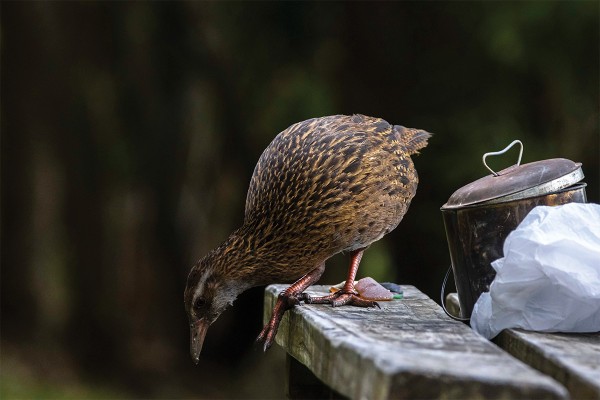Flightless, small, curious, and feisty. You may think we’re describing your most recent Tinder date, but Critic is actually describing an endemic bird: the weka. While weka are likely not fond of a candlelit steak dinner (they prefer the most critical piece of metal you bring along camping, ruining the whole trip), they’re fond of invertebrates, fruit, and the occasional rodent. If you consider lime Tuis a fruit, it’s really no surprise that weka made a recent return to our very own Dunners.
The ODT recently published articles investigating several sightings of the weka, two of which were in North East Valley and the Otago University Campus, and another reportedly entering a student flat.
Critic Te Ārohi reached out to the Department of Conservation (DOC) about the weka sightings, who helpfully confirmed “regular reports of sightings of weka in Dunedin”. They could not provide exact numbers, but also confirmed several reports of weka near the Otago Uni campus in March of 2024. “There are no known weka populations in or around Dunedin,” DOC told Critic, explaining that “it’s not known how the weka may have come to be in Dunedin”.
Being a flightless bird and all, their sudden appearance certainly raises suspicions. Did someone reintroduce the species to its motherland by hand? Is there some secret underground weka colony waiting to overthrow and enslave human populations? These are questions Critic asked certified avian-expert Oscar Thomas, a Masters student at Otago University and member of Birds New Zealand. He helped out Critic last year when we attempted to answer the age-old question about whether the University puts artificial bird noises across campus (which we’re still suss about).
Oscar informed Critic that while “weka are extremely capable of walking long distances”, the nearest remaining weka population are Rakiura Stewart Island (over water) and Fiordland, which is over 300km away. “We reckon these birds may have been brought here. Coincidentally, the first sighting showed up right in Studentville.” Which one of you packed a weka on your roadie?
Despite their presence, Oscar admitted that he was unsure if the weka would be able to stick around. “It’s unlikely with only two or three birds. You need a lot more for a viable population”, he told us. However, he pointed to a speck of hope: “two birds in North East Valley have found each other, so they may give it a go. Weka are now endangered, but were historically widespread across Aotearoa including Ōtepoti, so it would be nice to have them back properly one day.”
When asked if he’d seen the weka himself, Oscar told Critic he hadn’t been prioritising searching for the elusive bird. “I know a few people who have encountered them,” he said. “Lots of sightings of what we presume are no more than three birds have been reported by members of the public to Predator Free Dunedin and Birds New Zealand.”
If you’re like Critic, you’re probably wondering why you haven’t seen one of the weka yourself. “They’re not easy to find, and most active at dawn and dusk. Besides, neighbourhoods aren’t the best places to creep around with binoculars,” Oscar explained. That may be why when Critic went for a weka hunt, all they found was a couple of pūkeko and a baby dressed in a bunny costume. “They also make quite loud coo-eet calls that can give their presence away,” Oscar said. Coo-eeeeeet!
Critic talked to five different students all around campus, all of whom either said “no” or laughed at the suggestion of weka being seen around the North D area. We promise we’re not lying about this.
If you do happen to see the weka hanging around Dunedin, you can report sightings to 0800 DOC HOT. Maybe give Critic a call too, we’re still pretty salty the weka didn’t want to come see us.



